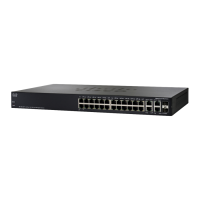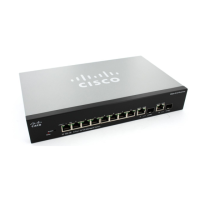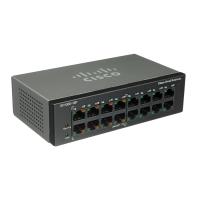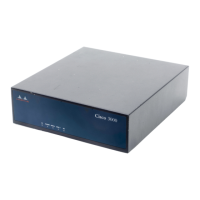Smartport
Error Handling
Cisco Small Business 200, 300 and 500 Series Managed Switch Administration Guide (Internal Version) 167
11
Persistent status of an interface is disabled, the interface reverts to the default
Smartport type when the attaching device to it ages out, the interface goes down,
or the device is rebooted. Enabling Persistent status on an interface eliminates the
device detection delay that otherwise occurs.
NOTE The persistence of the Smartport types applied to the interfaces are effective
between reboots only if the running configuration with the Smartport type applied
at the interfaces is saved to the startup configuration file.
Error Handling
When a smart port macro fails to apply to an interface, you can examine the point
of the failure in the Interface Settings page and reset the port and reapply the
macro after the error is corrected from the Interface Settings and Interface
Settings Edit pages.
Default Configuration
Smartport is always available. By default, Auto Smartport is enabled by Auto
Voice VLAN, relies on both CDP and LLDP to detect attaching device's Smartport
type, and detects Smartport type IP phone, IP phone + Desktop, Switch, and
Wireless Access Point.
See Voice VLAN for a description of the voice factory defaults.
Relationships with Other Features and Backwards
Compatibility
Auto Smartport is enabled by default and may be disabled. Telephony OUI cannot
function concurrently with Auto Smartport, and Auto Voice VLAN. Auto Smartport
must be disabled before enabling Telephony OUI.
NOTE When upgrading from a firmware version that does not support Auto Smartport to
a firmware level that supports Auto Smartport, the Auto Voice VLAN is disabled
after the upgrade. If Telephony OUI was enabled before the upgrade, then Auto
Smartport is disabled after the upgrade, and Telephony OUI remains enabled.
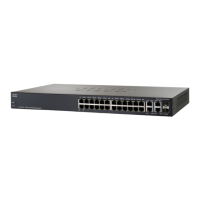
